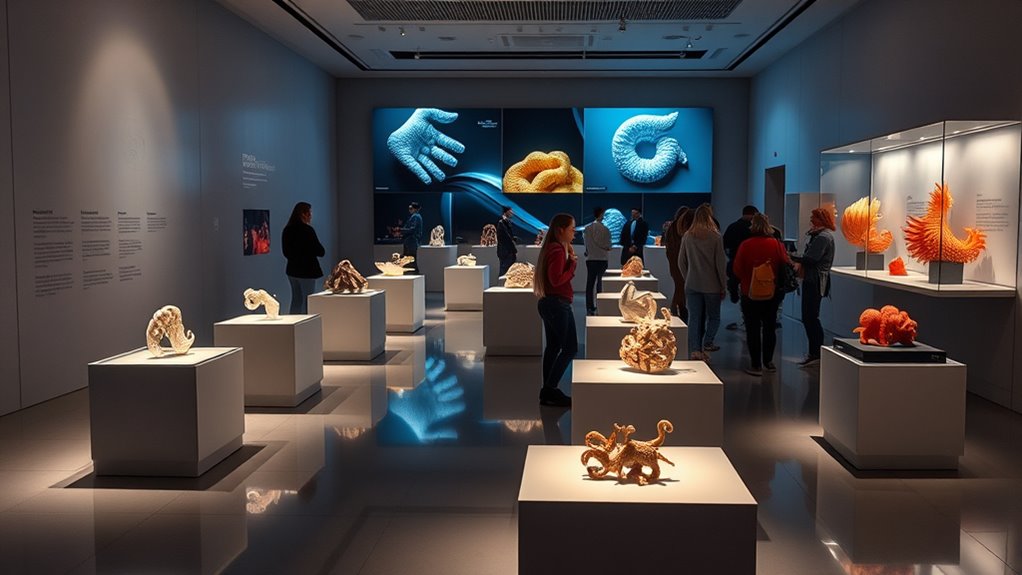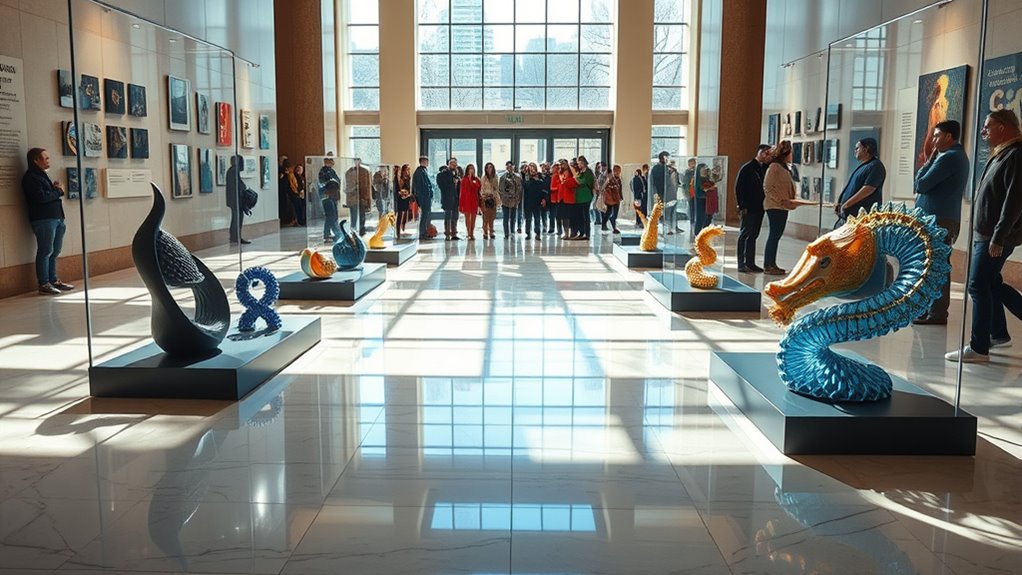The future of 3D-printed artifacts in museums is bright. You’ll see more accessible replicas that allow you to engage closely with art and history. These innovations promote learning by providing tactile experiences and virtual explorations of fragile items. Museums are balancing authenticity and accessibility while preserving cultural heritage. As new technologies evolve, you can expect exciting developments that enhance your museum experience. Discover more about these fascinating changes and their impact.
Key Takeaways
- 3D printing will enhance visitor engagement by enabling tactile interaction with replicas of artifacts and artworks.
- Museums will increasingly use digital models for educational outreach, making cultural heritage accessible to broader audiences.
- Ethical considerations regarding authenticity and ownership rights will shape the future policies surrounding 3D-printed replicas.
- Digital preservation techniques will safeguard fragile items, allowing for detailed virtual exploration without damaging originals.
- The integration of 3D technology will promote inclusivity, inspiring future generations through immersive and interactive museum experiences.

As museums embrace technological advancements, 3D-printed artifacts are set to revolutionize how you experience art and history. Imagine walking through a gallery where replicas of ancient sculptures or historical objects are available for you to touch and interact with. This innovation isn’t just about aesthetic appeal; it’s about digital preservation and accessibility. By utilizing 3D printing, museums can create accurate models of fragile or priceless pieces, ensuring that these artifacts are preserved for future generations while allowing you to engage with them in a meaningful way.
One of the most exciting aspects of 3D-printed artifacts is their potential for educational outreach. You’ll find that interactive displays with tactile elements enhance your learning experience. Instead of merely observing a painting from a distance, you could examine a 3D-printed version of the artist’s brushstrokes, feeling the texture and understanding the technique used. This hands-on approach not only deepens your appreciation but also makes art and history more relatable.
However, the rise of 3D printing in museums brings up important ethical considerations. You might wonder about the implications of creating replicas. While the technology can help make artifacts more accessible, it raises questions about authenticity and ownership. Who has the right to create a 3D model of an artifact? Are you diluting the value of the original piece by producing replicas? These questions highlight the need for museums to navigate the delicate balance between accessibility and preserving the sanctity of original works.
Moreover, digital preservation plays a crucial role in this shift. Museums can create high-resolution scans of artifacts, ensuring that even if the original is damaged or lost, a detailed digital copy remains. This approach not only safeguards cultural heritage but also allows you to explore these artifacts virtually, breaking geographical barriers. You could wander through the Louvre from your living room, examining pieces you may never have the chance to see in person. Additionally, the integration of father-daughter relationships into museum programming can inspire future generations to appreciate and engage with cultural heritage actively.
Frequently Asked Questions
How Does 3D Printing Impact the Preservation of Original Artifacts?
3D printing substantially impacts the preservation of original artifacts by enabling digital conservation and artifact replication. When you create a 3D print of an item, you’re effectively making a backup that reduces the need for handling the original, which can wear it down over time. This technology helps museums share artifacts without risking damage, ensuring that future generations can appreciate the originals while still engaging with high-quality replicas. It’s a win-win for preservation!
Can 3d-Printed Artifacts Be Sold to the Public?
Yes, you can sell 3D-printed artifacts to the public, but you need to navigate authenticity concerns and legal implications. Make sure you’re clear about the difference between the original and the replica. Misleading buyers can lead to disputes or legal issues. Additionally, check copyright laws and any restrictions from the original creators. Being transparent about the nature of your product can help build trust with your customers.
What Materials Are Commonly Used for 3D Printing in Museums?
In museums, you’ll often find materials like PLA, ABS, and resin used for 3D printing. PLA offers great material versatility, while ABS provides durability for functional pieces. Resin, on the other hand, excels in printing precision, capturing intricate details. Each material serves a unique purpose, allowing you to create artifacts that not only look authentic but also stand the test of time. Choose wisely based on the project’s requirements for the best results!
Are There Ethical Concerns Regarding 3d-Printed Replicas?
Imagine a painter who’s copied your unique style. You’d feel a mix of flattery and frustration, right? That’s how many artists and museums feel about 3D-printed replicas. You’ve got authenticity concerns, as these copies can blur the line between original and fake. Plus, there’s the tricky issue of intellectual property; artists worry that their work might be replicated without permission. Stepping through these ethical waters requires careful consideration of respect and rights.
How Can Visitors Interact With 3d-Printed Artifacts in Museums?
You can interact with 3D-printed artifacts through virtual tactile experiences that let you feel textures and details without physically touching them. Augmented reality integration enhances your visit by overlaying digital information on the artifacts, providing context and historical significance. Some museums even offer apps that let you manipulate 3D models on your devices, allowing you to explore these replicas from different angles. This engagement deepens your understanding and connection to the artwork.
Conclusion
Incorporating 3D-printed artifacts in museums is more than just a trend; it’s a revolution. Did you know that 61% of museums are already exploring 3D technology to enhance visitor experiences? By embracing these innovations, you’re not only preserving history but also making it accessible to everyone. As technology advances, you’ll witness a future where art and science blend seamlessly, inviting you to engage with the past like never before. The possibilities are truly endless!









